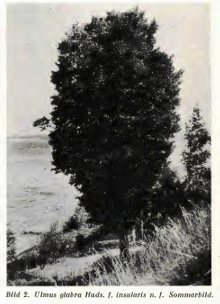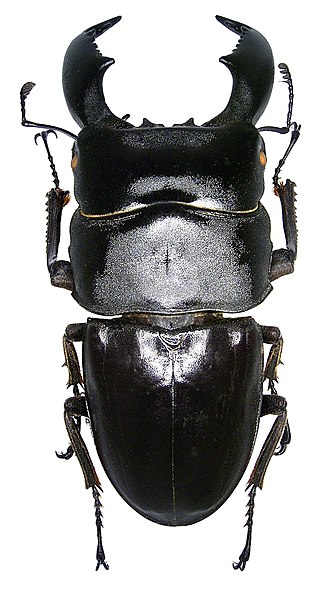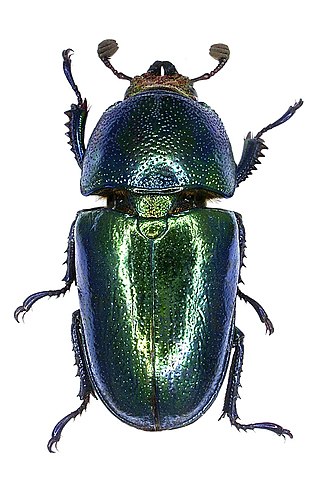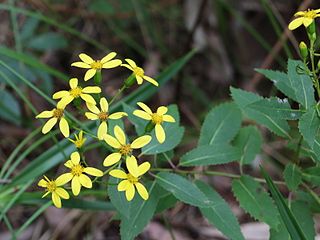
Lord Howe Island is an irregularly crescent-shaped volcanic remnant in the Tasman Sea between Australia and New Zealand, part of the Australian state of New South Wales. It lies 600 km (320 nmi) directly east of mainland Port Macquarie, 780 km (420 nmi) northeast of Sydney, and about 900 km (490 nmi) southwest of Norfolk Island. It is about 10 km (6.2 mi) long and between 0.3 and 2.0 km wide with an area of 14.55 km2, though just 3.98 km2 of that comprise the low-lying developed part of the island.

The white swamphen, also known as the Lord Howe swamphen, Lord Howe gallinule or white gallinule, is an extinct species of rail which lived on Lord Howe Island, east of Australia. It was first encountered when the crews of British ships visited the island between 1788 and 1790, and all contemporary accounts and illustrations were produced during this time. Today, two skins exist: the holotype in the Natural History Museum of Vienna, and another in Liverpool's World Museum. Although historical confusion has existed about the provenance of the specimens and the classification and anatomy of the bird, it is now thought to have been a distinct species endemic to Lord Howe Island and most similar to the Australasian swamphen. Subfossil bones have also been discovered since.

The cultivar Ulmus glabra 'Insularis' [:'island'], the Ven island elm, a fastigiate form of Wych Elm from Sweden, was identified and described by Nilsson in Lustgården 30: 127. 1949, as U. glabraHuds. f. insularis. Nilsson considered it "closely related to subspecies montana(Stokes) Lindqvist". The cultivar arose from a tree on Ven island in Öresund sound, planted c.1900 between Haken and Husvik, possibly from self-sown local seedlings, and approaching 2 m in girth by the late 1940s.

Dorcus titanus is a beetle of the family Lucanidae. It was described by Jean Baptiste Boisduval in 1835. Huang and Chen (2013) separated Serognathus from Dorcus by representing morphological characters and DNA analysis.

Lamprima adolphinae is a species of stag beetle in the family Lucanidae found in New Guinea and Papua.

Phalacrognathus muelleri, colloquially known as the rainbow stag beetle, and also the king, magnificent or Mueller's stag beetle, is a species of beetle in the family Lucanidae. It is found in northern Queensland, Australia and New Guinea. It can come in red, green, black, and blue forms. It is the only species in its genus, Phalacrognathus, which is closely related to the genus Lamprima.
The Lord Howe Island skink is a part of the native Australian reptiles’ classification. The Lord Howe Island Skink is a species of skink in the family Scincidae, located on Australia's Norfolk Island and Lord Howe Island. The Lord Howe Island skink population is uncommon to be found on Lord Howe island, however the majority of their population is located on the Norfolk Island complex.This skink is metallic bronze in colour and has flecks for defining features. It can grow up to 8cm in length, making them medium in size. Its taxonomy is diverse, the skink is a part of the Scincidae family, Oligosoma genus. This skink population is protected and considered vulnerable under the Environment Protection and biodiversity conservation act 1999.

The Lord Howe gerygone or Lord Howe gerygone flyeater was a small bird in the family Acanthizidae, brown and greyish in color. Its head was brown apart from a pale grey eye-ring and a grey throat and chin, many parts of the animal varied to the colour of yellow, this being apparent in its bright yellow belly. It made its home in the canopies of the island's forest until the early 20th century. The bird has had a variety of monikers: locally, it was known as the "rain-bird" due to its activity after the rains, or the "pop-goes-the-weasel", due to the similarity of its song to the well-known tune. The bird was endemic to Lord Howe Island in the Tasman Sea. There have been no records of the species since 1928, and it is considered to be extinct. Its extinction is almost certainly due to predation by black rats which were accidentally introduced to the island in 1918 following the shipwreck of the SS Makambo there.
The Lucanidae are a family of beetles that include the stag beetles. The family can be further subdivided in a taxonomy. The classification presented here follows Smith (2006), with the exception of the tribal classification within the Lucaninae.

Arctostaphylos insularis is a species of manzanita known by the common name island manzanita. It is endemic to Santa Cruz Island, one of the Channel Islands of California.

SS Makambo was a steamship first owned by Burns Philp & Co. Ltd. She was built in Port Glasgow in Scotland and named after an island in the Solomon Islands. She carried both passengers and cargo and was principally used on routes between eastern Australia and islands in Melanesia and the Tasman Sea. In November 1908 Jack and Charmian London travelled from Guadalcanal to Sydney on the Makambo after abandoning their ill-fated circumnavigation of the world on the Snark, a 45' sailing yawl.

Lordhowea insularis is a species of flowering plants in the groundsel tribe within the daisy family. It is endemic to Australia's Lord Howe Island in the Tasman Sea.

Lamprima is a genus of beetles in the family Lucanidae that contains five species. They are found in Australasia.

Lamprima aurata, the golden stag beetle, is a species of beetle in the family Lucanidae. In Tasmania, this species is referred to by the "common name" of Christmas beetle, a name that is normally used for beetles in the family Scarabaeidae, genus Anoplognathus.

Lamprima aenea is a species of beetle in the family Lucanidae that is found on Norfolk Island.It has size of 27-30 mm for males and 23 to 26 mm for females.It has color variations such as dark bronze and blue and green as it's typical color; there also are some breeders of Lamprina aenea in Japan and Taiwan. Due to the destruction of it's natural habitat it became rare in the wild,the Norfolk Island become ionly endemic stag beetle.

Machaerina insularis is a flowering plant in the sedge family. The specific epithet is the Latin insularis, alluding to its island home.
Pyrnus is a genus of spiders in the family Trachycosmidae. It was first described in 1880 by Simon. As of 2017, it contains 9 species.
Psaltoda insularis, commonly known as the Lord Howe Island cicada, is a species of cicada native to Lord Howe Island. It was described by Howard Ashton in 1914.

Lordhowea is a genus of flowering plant in the family Asteraceae, native to eastern and south-eastern Australia and Lord Howe Island. The genus was established by Bertil Nordenstam in 1978.













